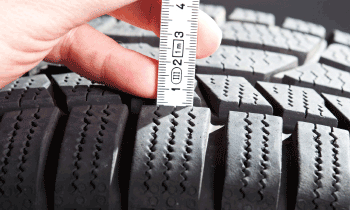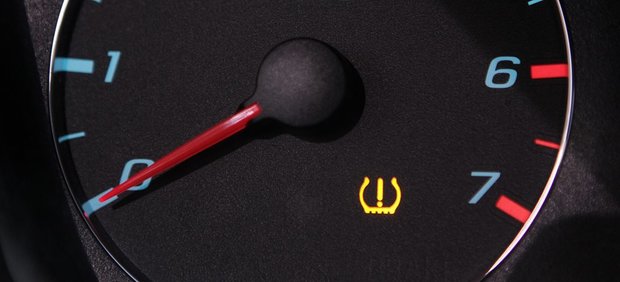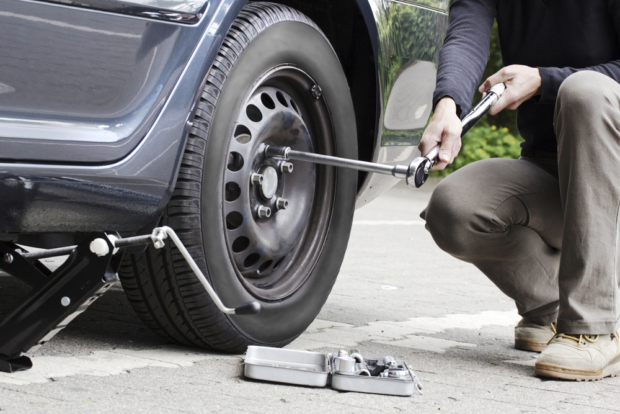Why tyre depth is so important

The importance of tyres and knowing your way around them
Tyres are arguably the most important part of your vehicle as they are the only contact your car has with the road. In essence, they are the only thing keeping your car and you from being at one with the road, and not in a zen way!
They have a number of functions which should not be overlooked:
-
Firstly they're the only contact between you and the road
-
Ensure a safe and comfortable drive
-
Support the weight of your car
-
Absorb road shock - air or nitrogen in the tyres act as a spring and this dramatically increases your comfort.
-
Transmit traction and braking forces and
-
Steering by changing and maintaining the direction of travel
It is also paramount to know the effect bad tyres can have on your car. They will reduce the performance of the car, increase braking distance and risk of skidding and also reduces fuel efficiency and increase CO2 emissions.
Here are things that you as a car owner can do to take responsibility and ensure your tyres are of road-worthy condition:
Tread depth
This is essential for a well-performing tyre. Tyres need tread depth in order to keep traction on the road especially in poor weather conditions. The grooves on your tires work to siphon water away from the surface when the road is wet. If the tread is not at the proper depth, it can become difficult for enough water to be carried out from beneath the tyres. The minimum legal tread depth should be 1.6 mm. If these standards are not met it can cause something called hydroplaning where your tyres cannot make contact with the wet surface of a road and skim across a thin layer of water.
Tyre wear and tear
This is a normal occurrence of driving your vehicle. Although if you notice that certain parts of your tyres may be more worn than others this may be cause for concern. Uneven tire wear can be a result of a variety of causes including under or overinflated tires, inner or outer edge wear due to improper wheel alignment, cupping resulting from faulty suspension components, and feathering due to an improper toe setting (the direction the tyres point in relation to the centerline of the vehicle). This can significantly reduce the life of your tyre.
Tyre air pressure
The air pressure inside tyres is hugely important and can cause issues if not correct. To check this you need a pressure gauge which is found in most petrol stations. The pressure gauge will allow you to measure the pounds per square inch (PSI) of each of your tires and make sure they are inflated to the manufacturer's recommended pressure. The recommended PSI for most cars is between 32-35 when they are cold. The weather can also have an effect on the tyre pressure with Cold weather causing tyre air pressure to drop and warm weather will cause tire pressure to increase. Many vehicles nowadays come equipped with monitoring systems where a warning light will appear on the dashboard if it detects an issue, always take heed of this! Not only is it dangerous to drive on this but it also reduces fuel economy and driver manoeuvrability.
-
Underinflated tyres will give you less control, can increase the braking distance and will wear much faster.
-
Overinflated tyres are just as dangerous: they reduce grip, braking is less stable and you have less control, which can lead to dangerous situations.

Tyre damage and deterioration
This is something that can be monitored on regular tyre inspections. What's important to look out for here is tyre tread and sidewalls for cracking, scrapes, bulges, cuts, snags, punctures, foreign objects, or other damage resulting from everyday use. Remove any stones, glass, foreign objects, nails, screws, etc., embedded in the tread to prevent further damage.
It is also important to inspect your spare tyre and make sure it is ready to be used if necessary. Know where the vehicle's jack and lug wrench are located and make sure they are ready to use if in the unfortunate event of tyre issues.
Importance of knowing how to change a tyre
This is one of those things that everyone should know how to do should you find yourself in the position.
First off there are a few things that you need when changing a tyre:
-
A spare tyre- fully inflated (usually in the boot)
-
A jack
-
A lug wrench
-
The lock nut
It may also be handy to carry a mat or something to kneel on, a piece of wood to stabilize in case you get stuck on an uneven surface and a pair of gloves.
Step by step to changing a tyre
-
Find safe location, turn hazard lights on and make sure handbrake is on - Once you realise you have a flat tyre do not brake immediately but slow down and try to pull in to a safe location. This is not always possible on busy roads but always try to pull in as much as you can off the road.
-
Gather your tools - go to the boot and gather all of the equipment mentioned above and make sure that you have the special lock nut also. This is essential in removing the tyre.
-
Loosen the wheel nuts - using the lug wrench, move it in a counterclockwise direction to loosen the wheel nuts about ½ of a turn but do not remove them completely just yet.
-
Place jack under the vehicle - Many vehicle frames have moulded plastic on the bottom with a cleared area of exposed metal specifically for the jack so as to not damage the vehicle.
-
Raise the vehicle - With the jack properly positioned, raise the vehicle until the flat tyre is about six inches above the ground. Never put any part of your body under the vehicle during or after raising the vehicle with the jack.
-
Remove lug nuts completely
-
Remove flat tyre
-
Mount spare tyre on lug bolts - Place the spare on the hub by lining up the rim with the wheel bolts. Push gently until the wheel bolts show through the rim.
-
Tighten lug nuts by hand - Put the lug nuts back on the wheel bolts and tighten them all the way by hand.
-
Lower vehicle and tighten lug nuts again - using the jack lower the vehicle so that the tyre is resting on the ground. Tighten the wheelnuts now with the wrench as tight as you can.
-
Lower the vehicle completely - remove the jack when fully lower and give the wheel nuts one last check that they are as tight as possible
-
Re-stow all of your equipment
-
Check the tyre pressure of the spare tyre - it has been sitting in your boot for whatever amount of time, it is always a good idea to check the pressure when you safely reach a garage nearby.
So there you have it, your guide to changing a flat tyre. It is always a good skill to have. Not only this but consistent tyre management as this will prolong the life of your tyre and help prevent the possibility of a serious incident.

Author

Justin Kavanagh
Justin Kavanagh is a recognised leader
in automotive intelligence and vehicle
data supply to the entire motor industry.
He has almost 20 years experience in
building systems from the ground up.
As the Managing Director of Vehicle
Management System, he understands the
need and importance of trustworthy and
reliable vehicle history and advice to
both the trade and the public.
Follow me on LinkedIn